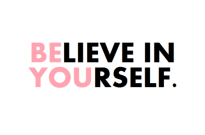In Twitter’s beginnings, there was a frenzy of people and companies learning how and why to use it. For myself, I chose to not get involved and stick to Facebook. Only a few years later, I have come to see the exemplary means of communication and connection that Twitter offers to individuals, and the PR machine that it can be for companies.
Brian Solis, author of the book, Engage, discusses the business idea of “unmarketing”. While a rather larger term/idea, one key aspect of unmarketing, is communicating with the public without trying to ask them to purchase what your company is selling. Initially this may seem like wasted time and effort from a revenue driven standpoint, but that is not at all the case. People are more and more aware of marketing and advertising, and the public is becoming more and more resentful of traditional sales tactics. Many people can and do skip ads on TV, and install ad blocking software on their computers. So how do companies bring in people to do business with them without these ads? This is where unmarketing comes into play. If a person trusts a company to care about more than just his/her money, even if it’s just a little more, than it is likely that that person will do business with whom is trusted.
Best Buy understood the idea behind unmarketing. In 2008, Best Buy recognized that people and employees were talking about Twitter. By 2009, the Twelpforce was created and implemented. Twelpforce is a group of a few thousand Best Buy employees who have volunteered to be a part in a huge team dedicated to answering the public’s questions on twitter. Everything tech related is a go! The twelpforce is instructed to help honestly and sincerely as the number one and only priority; direct sales and marketing is not a priority.
This is the TV Ad for the Twelpforce Campaign:
Twelpforce was a risky investment for Best Buy. It required the attention of a large number of employees, and there was certainly the risk that, like all things internet related, the company could be embarrassed in a number of ways. Despite all that, Twelpforce successfully reaches out to 44,202 followers, and has answered tens of thousands of questions, all without shoving anything Best Buy related down consumers’ throats.
This campaign has worked to create customer trust and loyalties that could never be gained through traditional advertising. Instead of the companies screaming and crying for the public’s attention, the public knows us enough to come to us; that is the goal.




